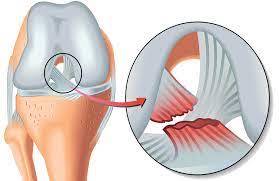What is the Anterior Cruciate Ligament?
One of the most important joints in our movement system is the knee joint. The knee joint, which is formed by the combination of three bones, allows us to stand, walk, sit and get up on the one hand, and on the other hand, it allows the hardest sports movements.
The anterior cruciate ligament is one of the two ligaments that cross each other and are located in and in the middle of the knee joint.
The anterior cruciate ligament plays an important role in the stability of the knee by limiting the forward sliding of the shinbone relative to the thigh bone and restricting the rotational movements of the knee, and reduces the stresses on the joint.
In order for the knee joint to respond to the most difficult conditions and meet the needs, the bones forming the joint are connected to each other by four solid ligaments, two of which are on the inner and outer sides, one in the front and the other in the back..
Cruciate Ligament Rupture
One of the most common knee injuries is a sprain or tear of the anterior cruciate ligament. It can often be injured as a result of rotation of the body with the knee in the center while the foot is fixed on the ground or as a result of direct blows to the knee from the side.
Athletes who participate in high-performance sports such as football and basketball are more likely to injure their anterior cruciate ligament. If there is an injury as a result of direct impact, there is often damage to the meniscus, cartilage and other tissues.
What are the Symptoms of Anterior Cruciate Ligament Injuries?
- During an anterior cruciate ligament injury, severe pain occurs with a sudden rupture sensation in the knee.
- While moving, there is a feeling of repture in the knee and a repture sound is heard from the knee.
- In a person with an ACL ruptured, swelling occurs in the knee within a few hours after injury.
- The cause of the swelling is bleeding from the ruptured ligament into the knee.
- Due to edema, the mobility of the knee decreases and there is difficulty in moving it.
- The athlete usually cannot continue the sport and has to leave the competition.
- Due to pain and swelling, limitation of motion in the knee occurs and limping occurs.
- In some cases, there may be a feeling that the knee has moved from its place.
How is the Treatment?
First of all, the first thing to do in this situation is to stop moving. The patient should be taken to the hospital by being carried on a stretcher or on the lap without stepping on the ground.
Cold compress or elastic bandage can be applied to the patient to reduce pain in anterior cruciate ligament injuries.
In anterior cruciate ligament injuries, generally without the need for any treatment;Formed in the leg swelling, pain or redness can be cut in about 1 week.
Then you can walk normally with your feet on the ground. but it may be in cases that require surgery. There are different techniques used in ACL surgeries.
Each surgeon may use different methods in different patients. Today, methods in which the ACL is restructured and the old ligament is not used are preferred.
The tissue to be used instead of the ACL is preferably taken from the patient herself. There are different methods for fixing these tissues in the tunnels to be opened.

